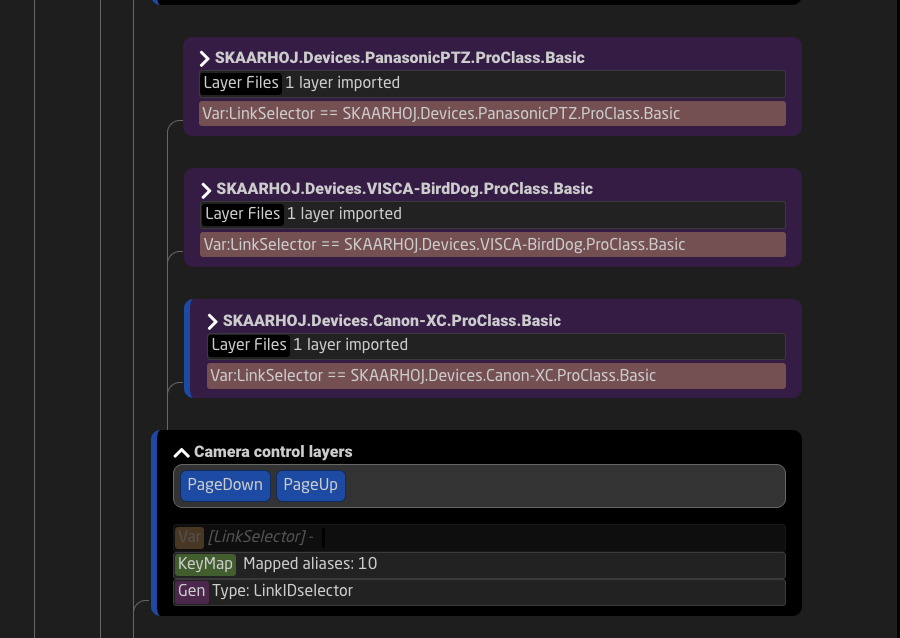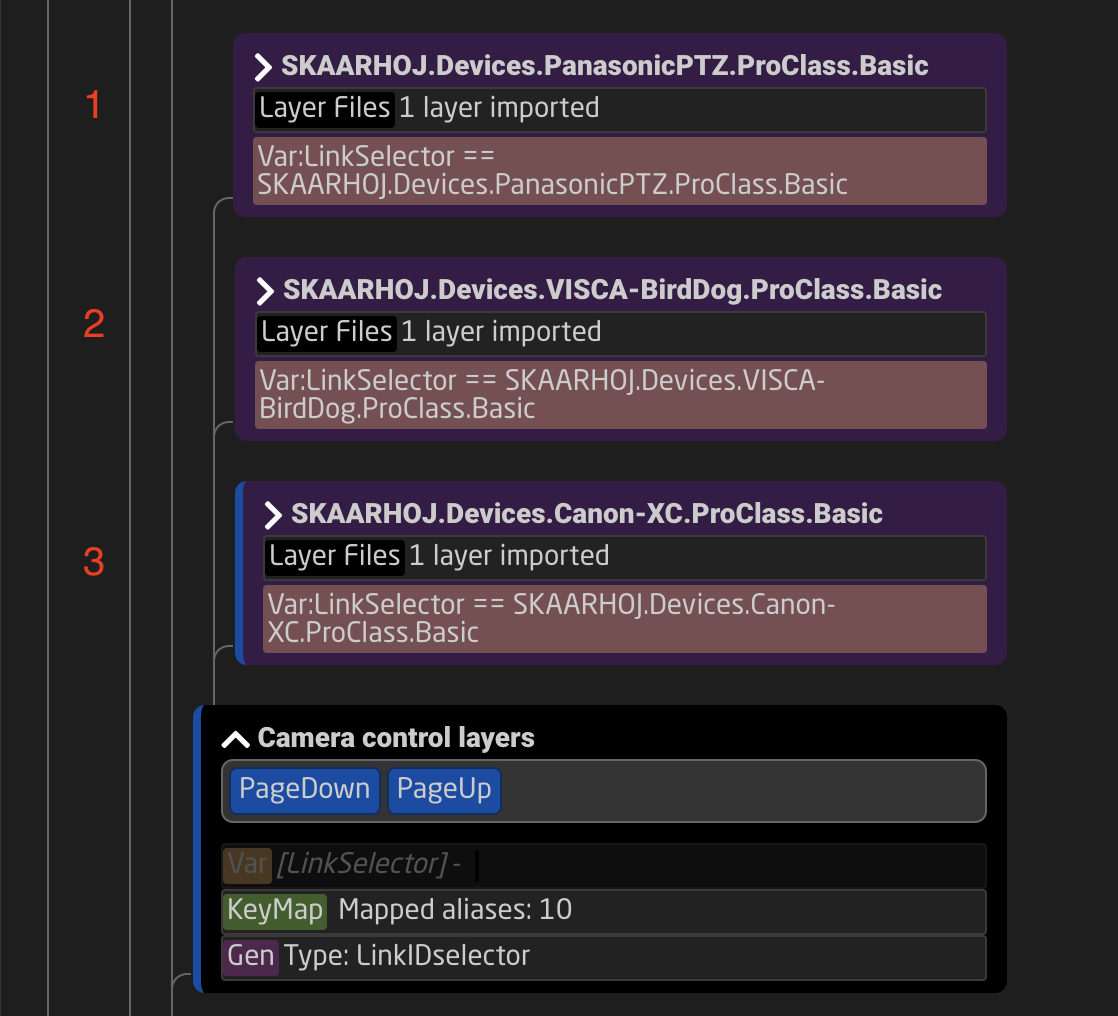Separating Zoom Sensitivity from Pan and Tilt Sensitivity
By default Pan, Tilt, and Zoom are all controlled by the setting Joystick Sensitivity. This is not ideal for some users who would like Zoom to be controllable at its own sensitivity. To separate this out it is necessary to dive into the configuration and the json editor, but don't worry, it isn't too difficult.
This example will be done on the PTZ Extreme but can be applied to all configurations.
Joystick sensitivity is not set for the whole controller, but per camera configuration based on device core. The configuration in this instance is different from the panel mapping. There will be a different configuration added for each device core used.
Different brands might use the same device core, example: BirdDog, NewTek, Marshall all use the Visca device core.
1. Determine the number of PTZ configuration in your set up.
In the set up example there are 3 different device cores used as indicated in the Devices section. All devices will be grouped by the used core in this section. 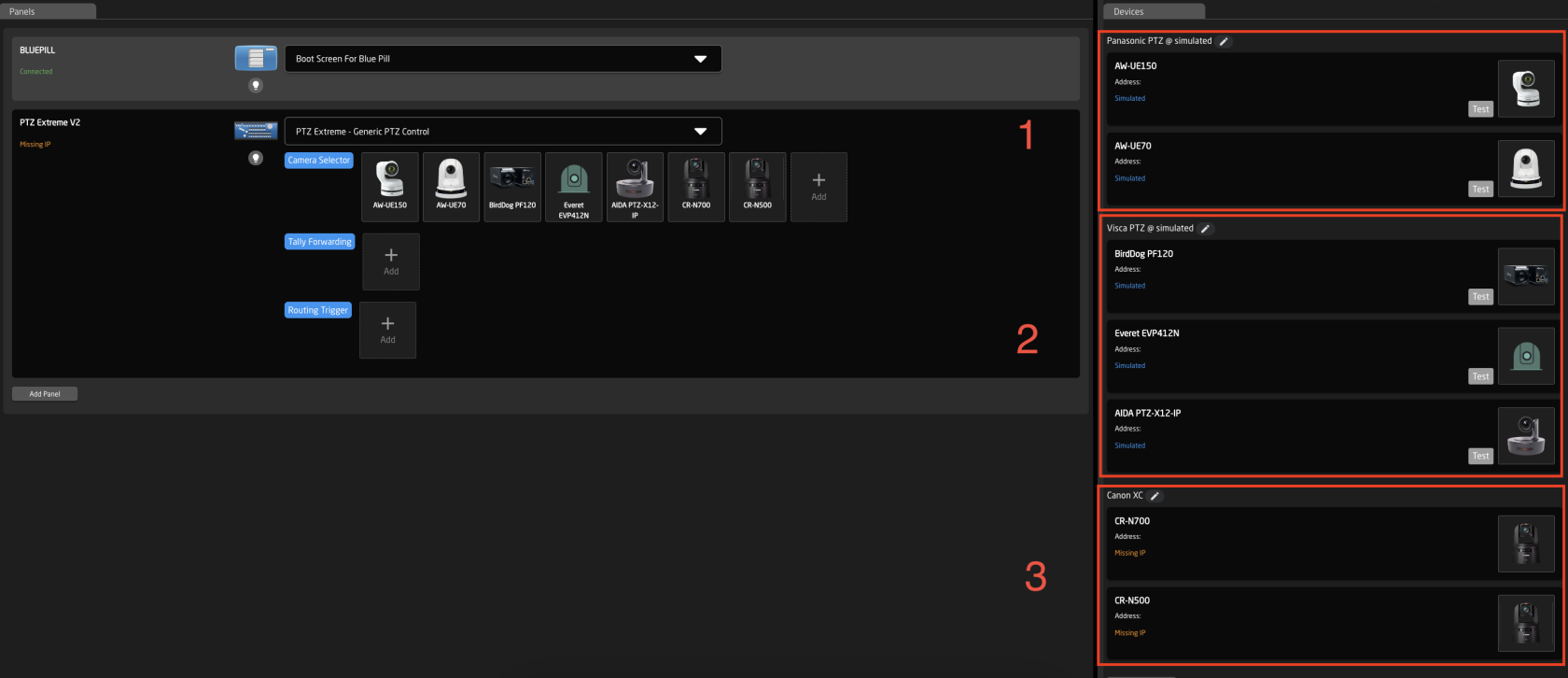

3. Open the Tree to navigate to the Device Core Configurations. The tree expands from the bottom up, like a tree starting at the roots. (This is shown in a collapsed view)
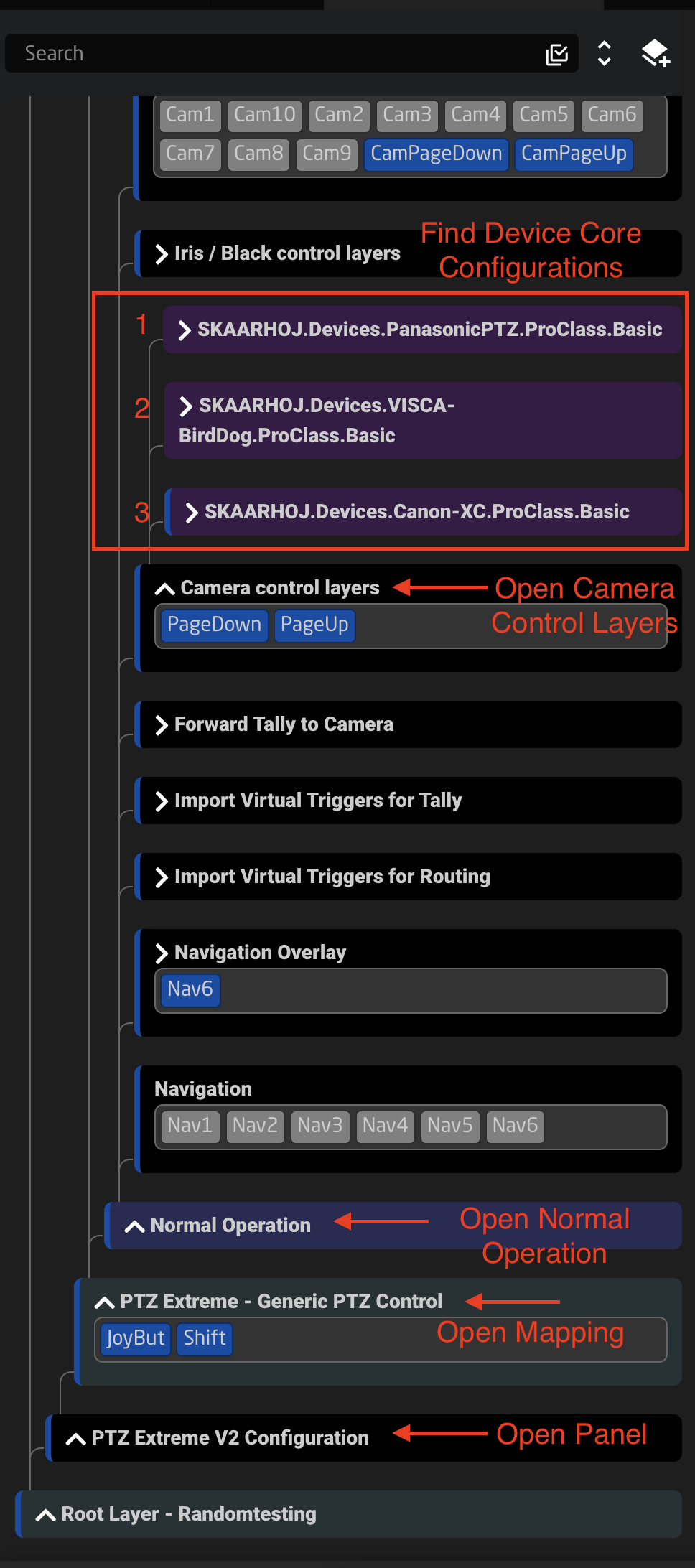
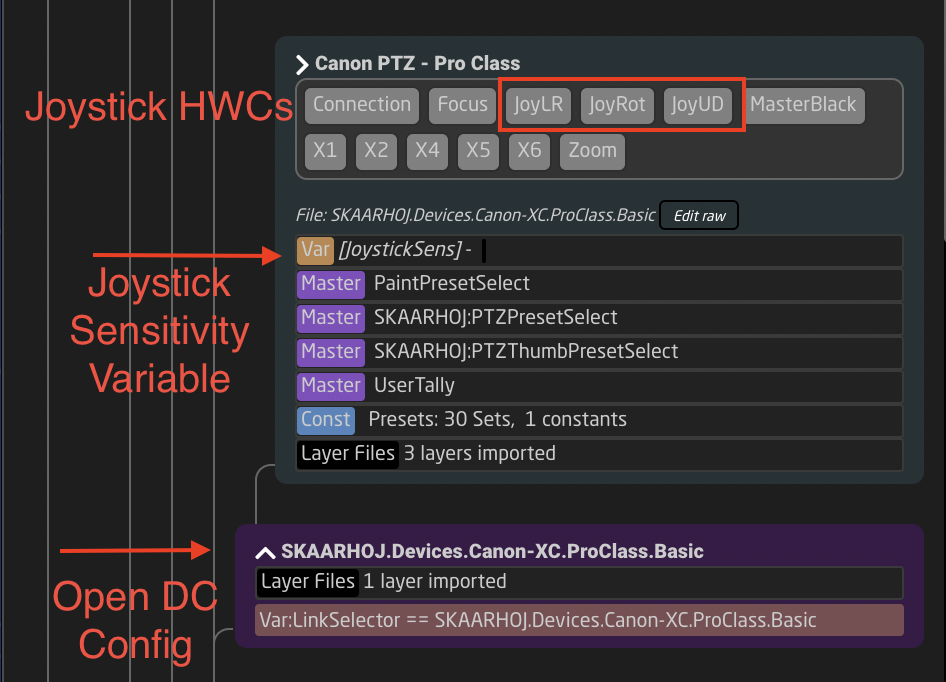
5. Open the Tree Layer with the Joystick Sensitivity Variable. When selected the layer will change color and you will see it open in the Inspector on the right side of the screen.
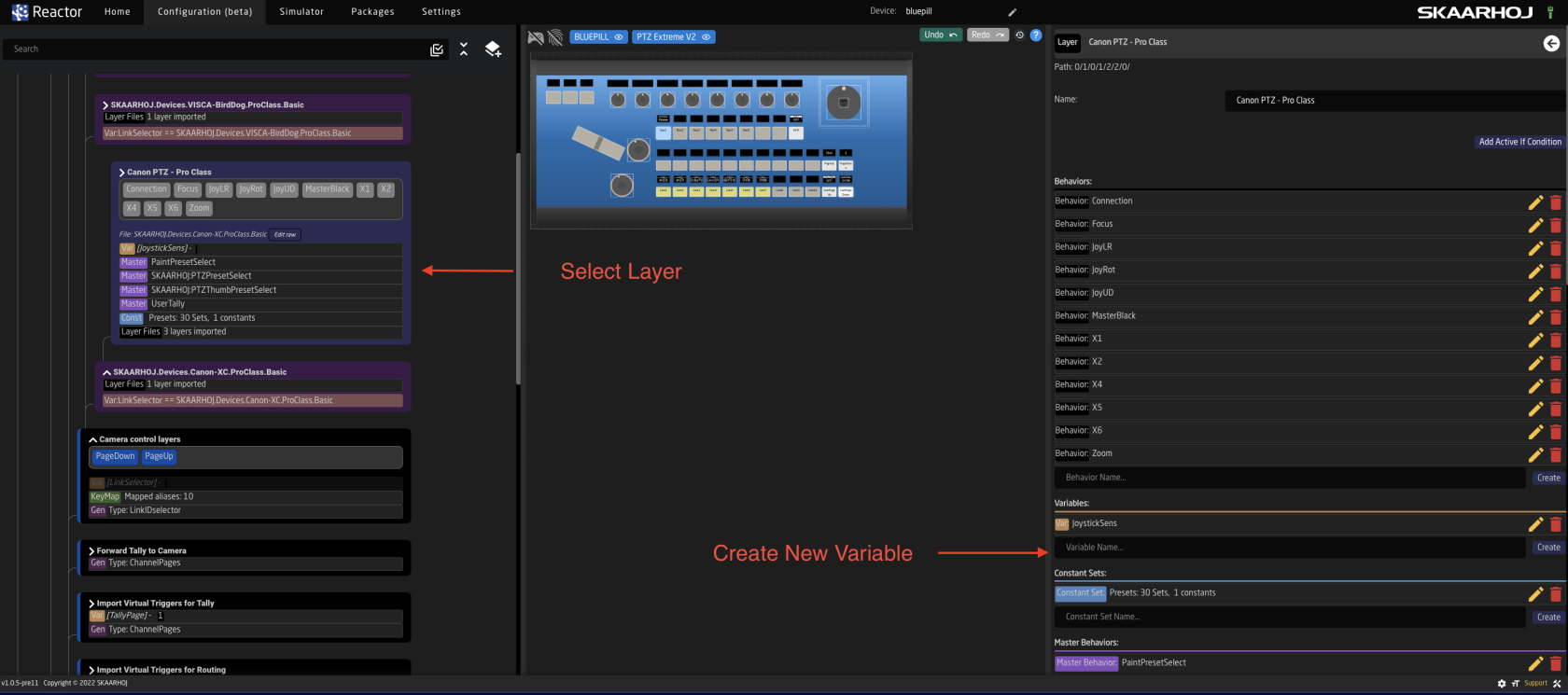
6. Create a new variable called ZoomSens. This could be named anything, but it is best to use something that will be easy to remember and type later.

7. Open the ZoomSens variable to edit the details. Use the same details as the JoystickSens variable.
The name is however you would like it to display on the controller.
The type is Range
The Min is 1
The Max is 10 (The scale should not exceed 10)
Default value is 10
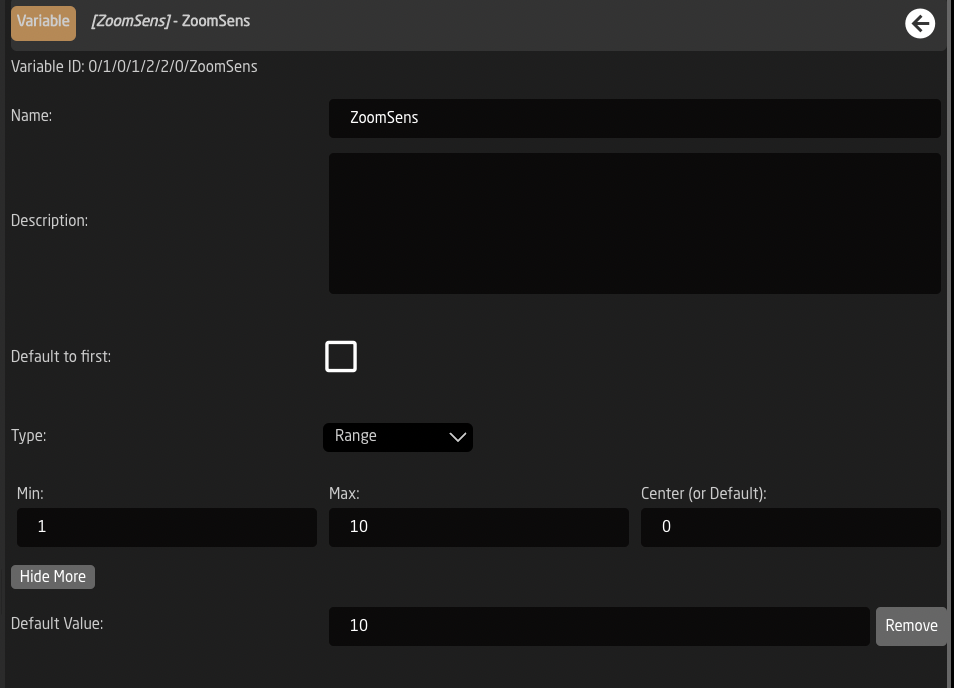
8. Go back to the Tree and select the JoyRot box in the same layer you are working in. This will open the joystick rotation (zoom) in the inspector.
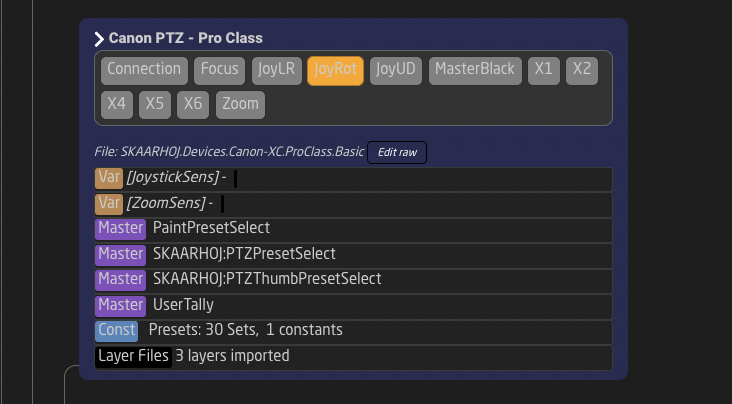
9. DON'T PANIC
10. Open Show JSON for the JoyROT component.
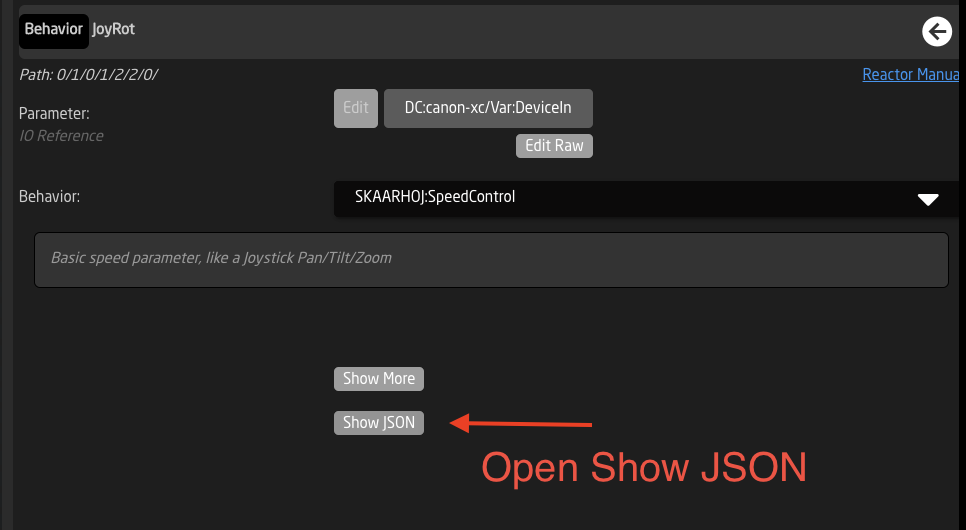
11. Select Format
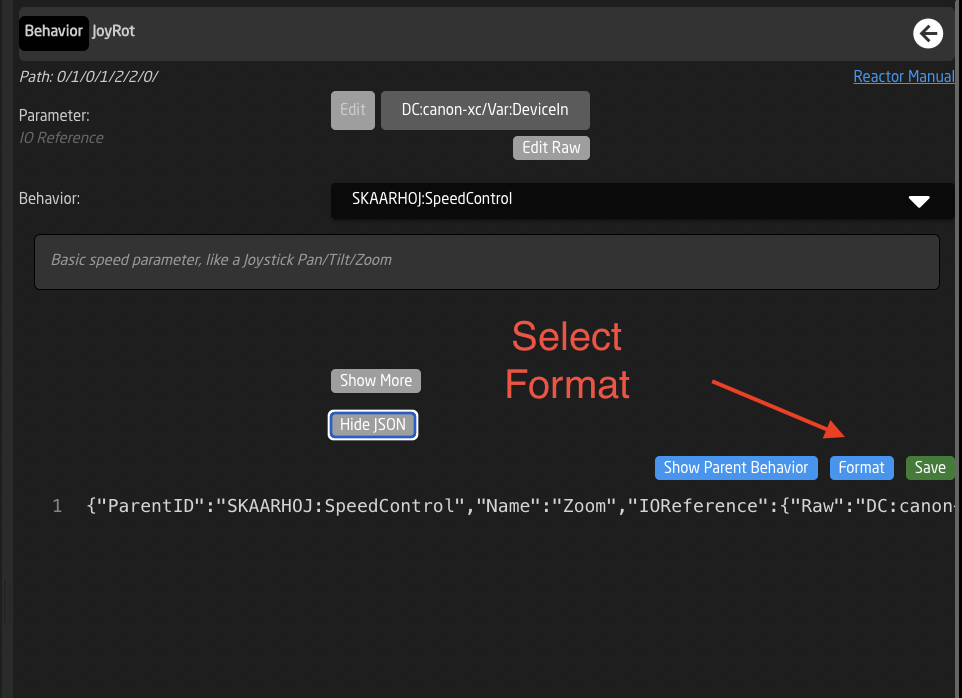
12. Select Show Parent Behavior
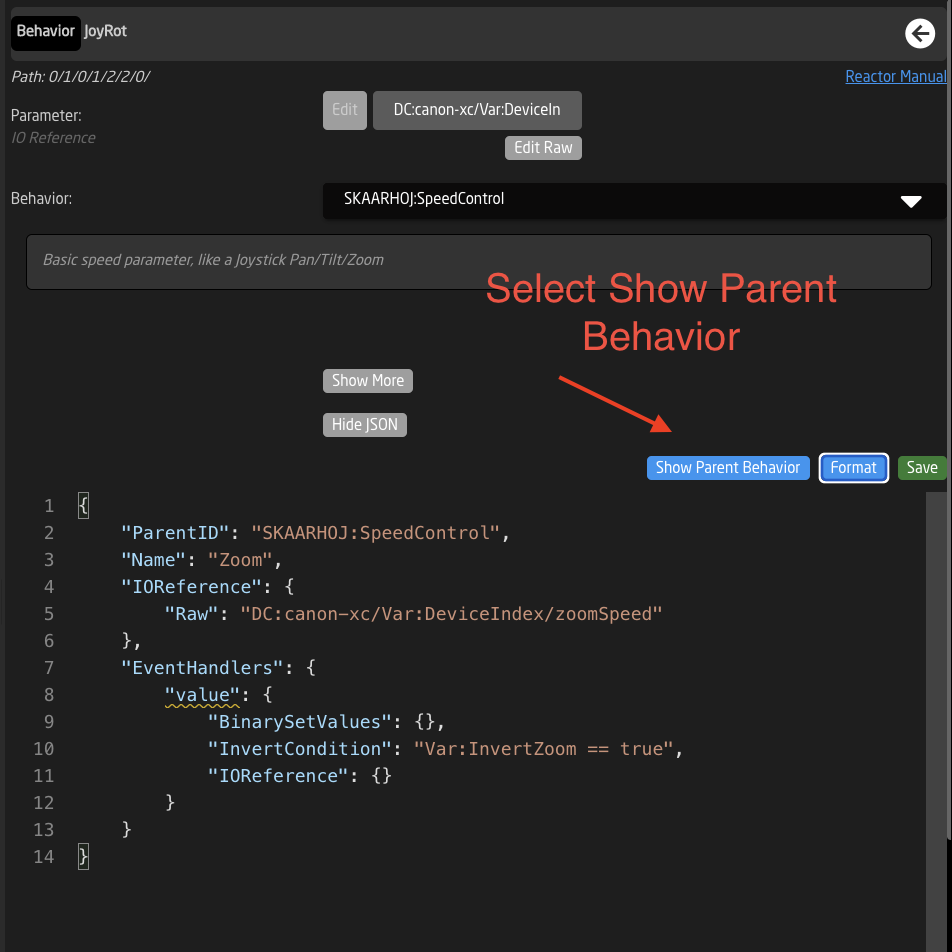
13. In the Window the pops up, select Format again. This will expand the data to see the whole JSON text.
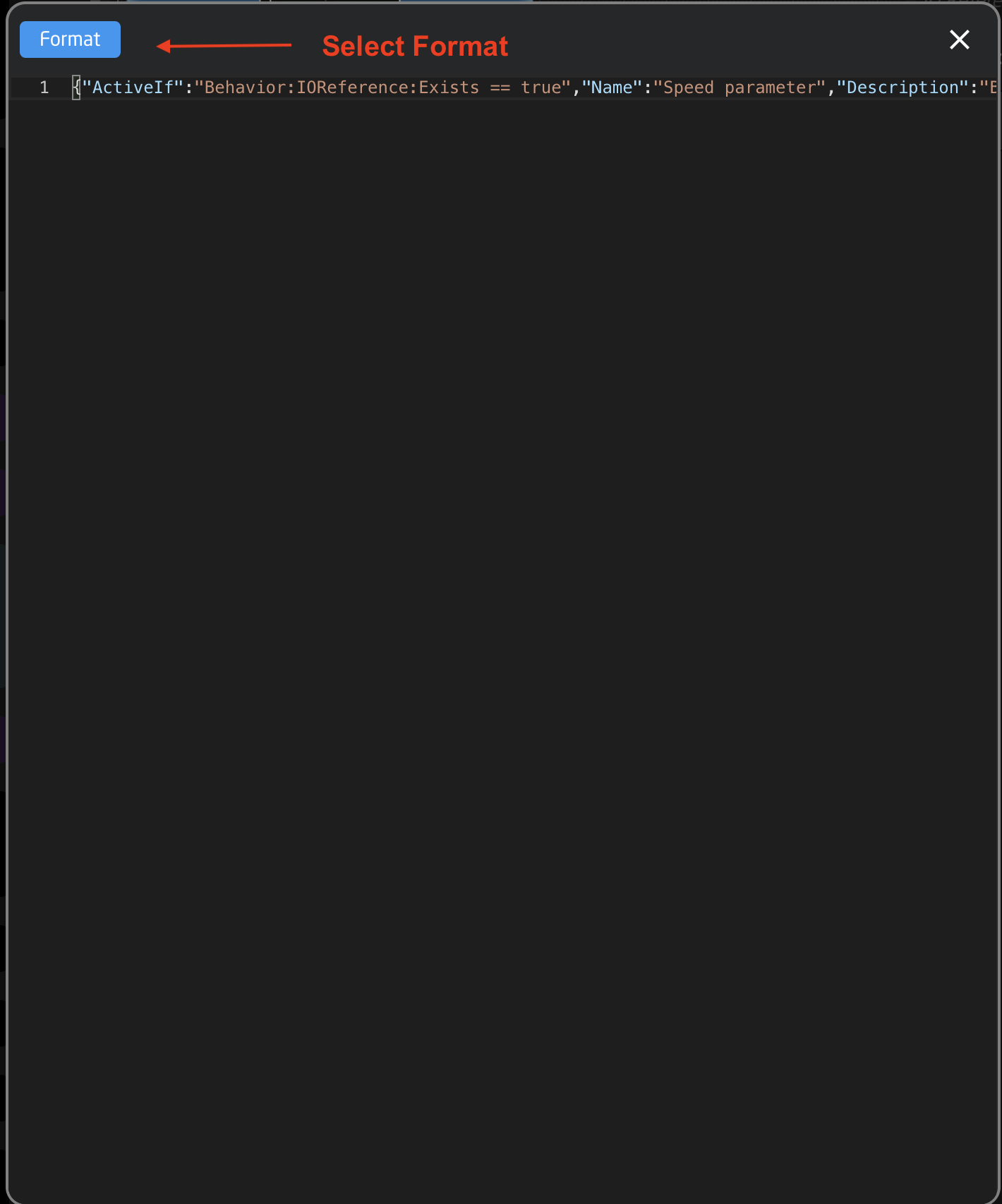
14. Scroll down to the Joystick Sensitivity commands and copy the whole command set as seen below, every part is essential:
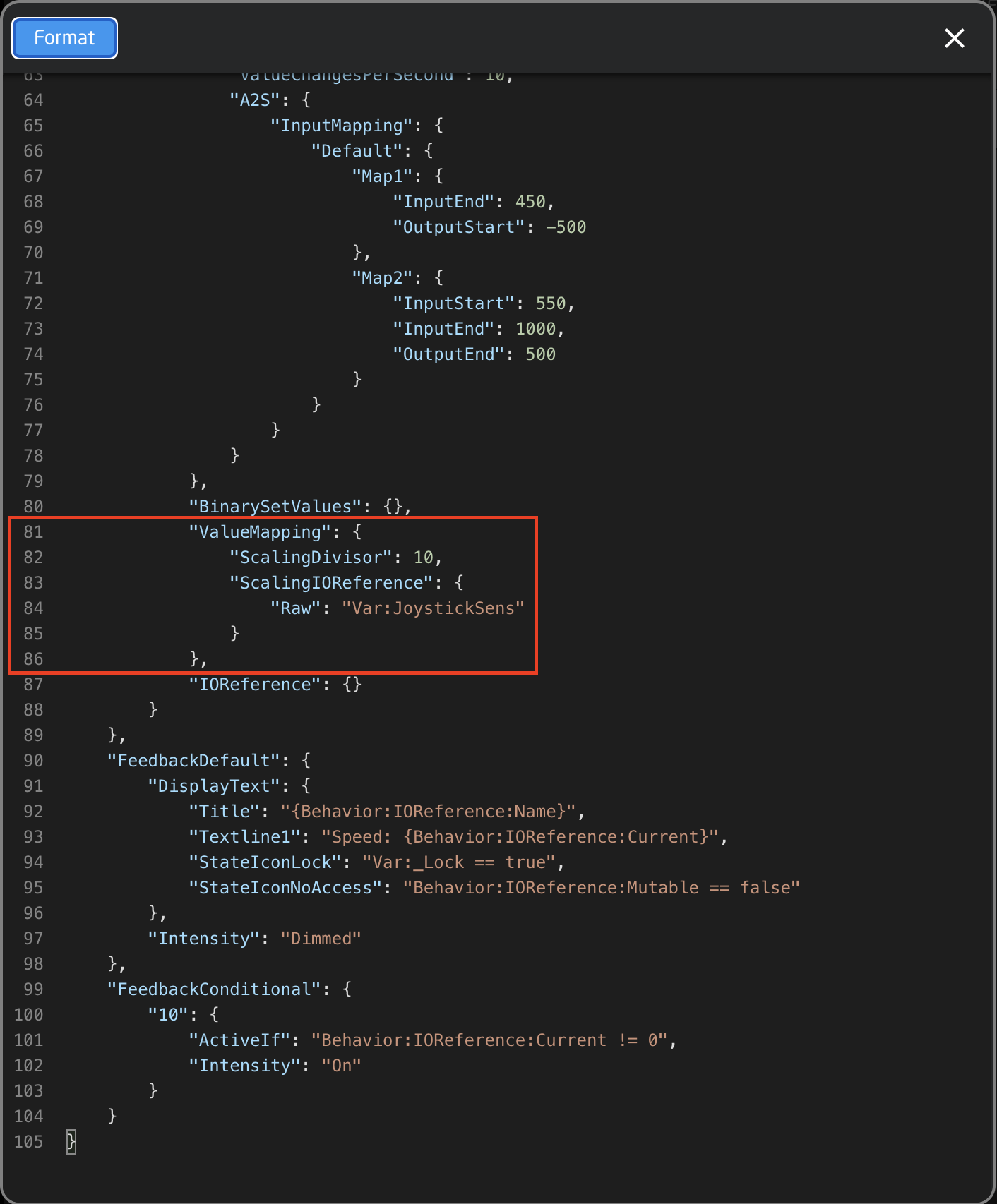
15. Close this window.
16. In the Inspector, find the BehaviorSetValues text in the JSON editor. Click after the comma and hit enter.
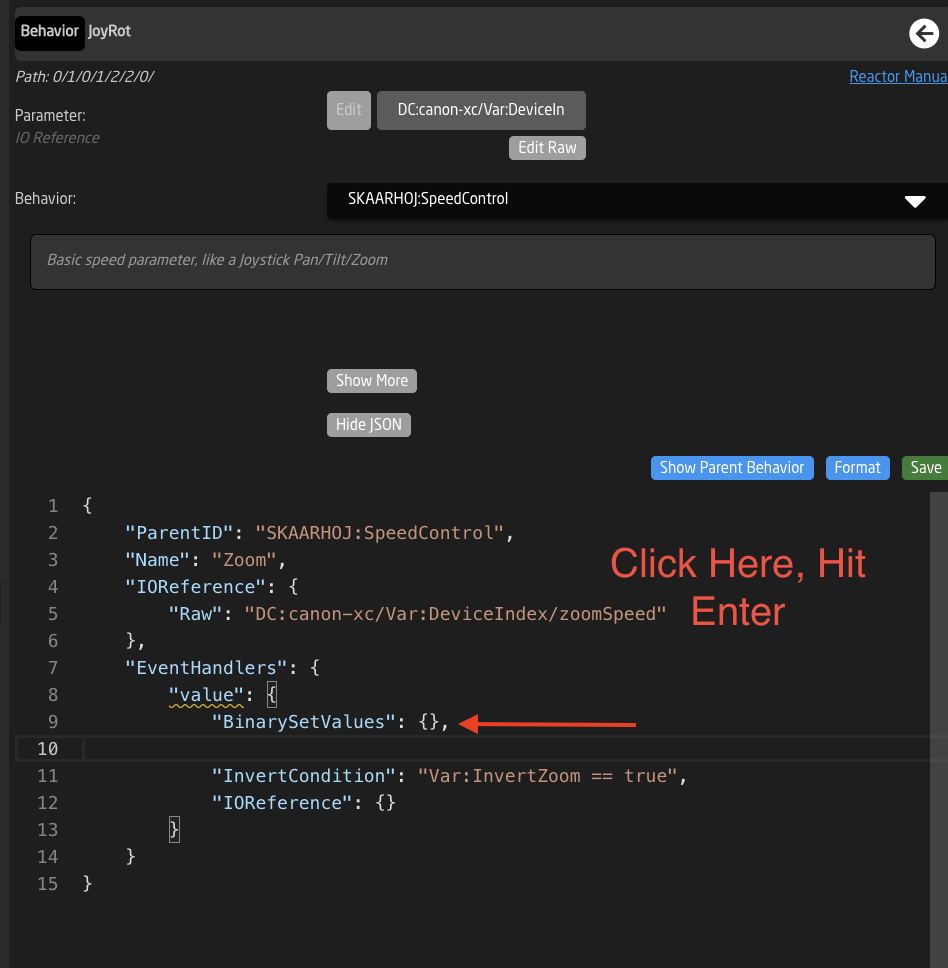
17. Paste in the text you copied from the Parent Behavior pop up.
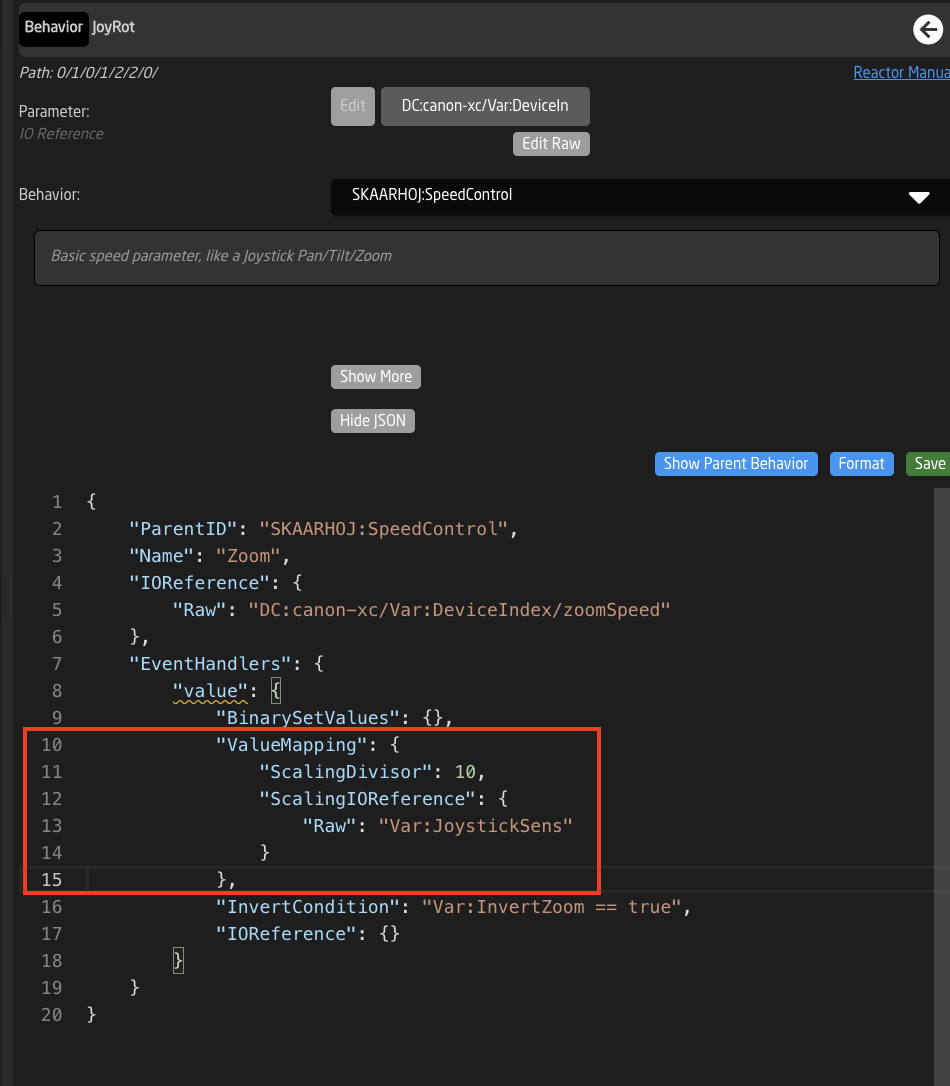
18. Find the text in the pasted in command that say: "Var:JoystickSens"
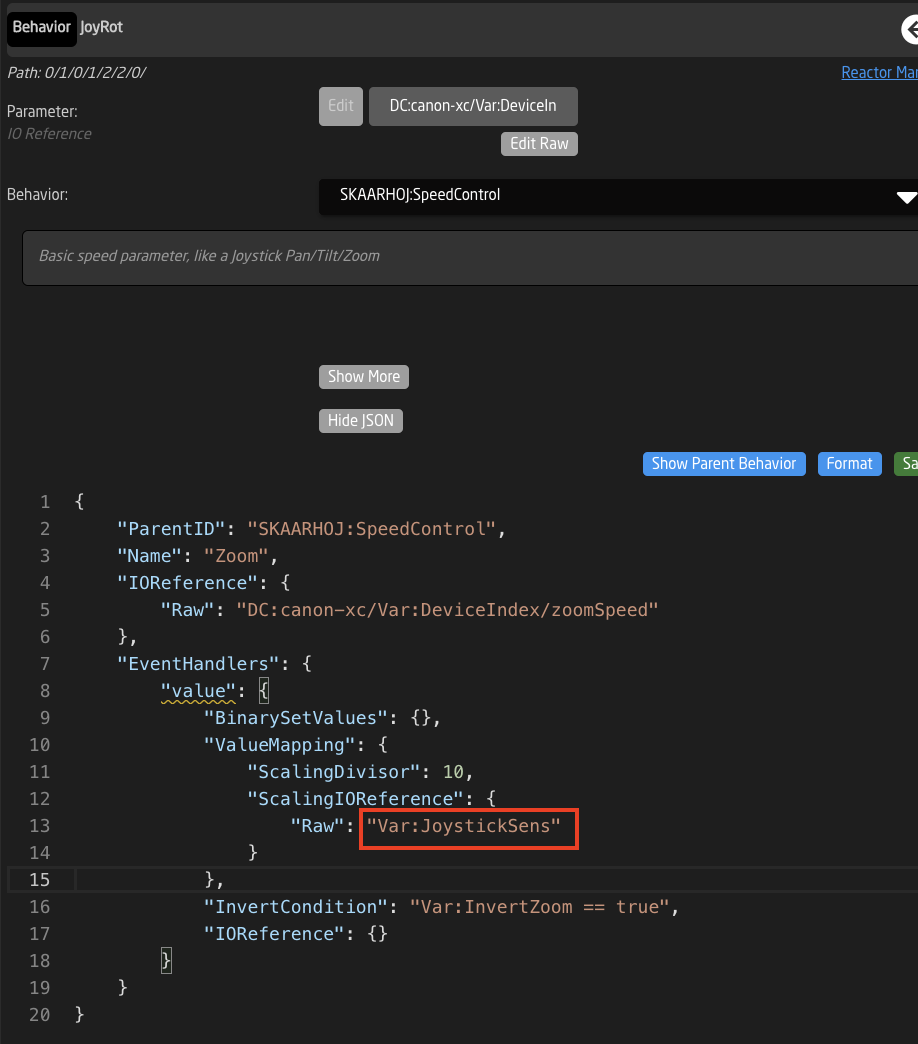
19. Edit this text to say: "Var:ZoomSens" then press Save
If you did not name the variable you created earlier ZoomSens, you will type the name you did create here after the :
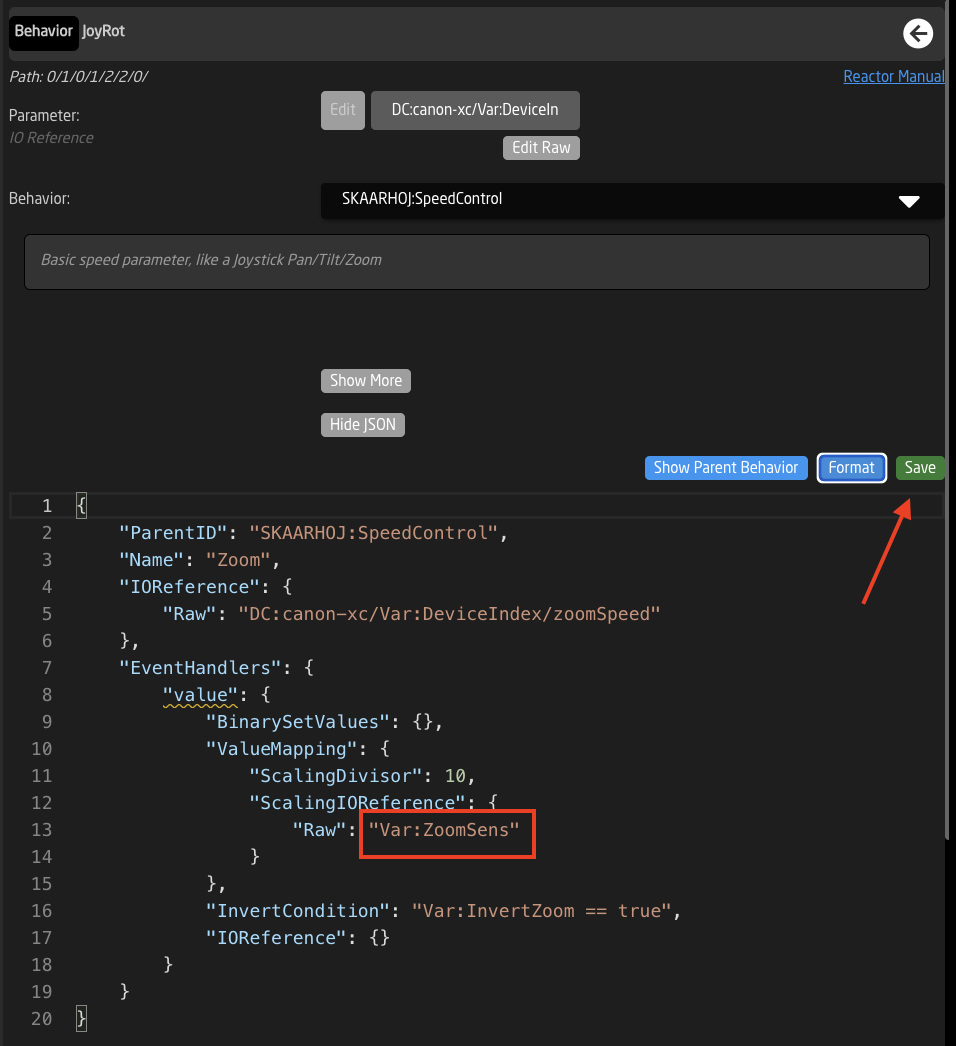
20. If there is a Zoom Rocker, you will need to do steps 18 + 19 for that hardware component as well.
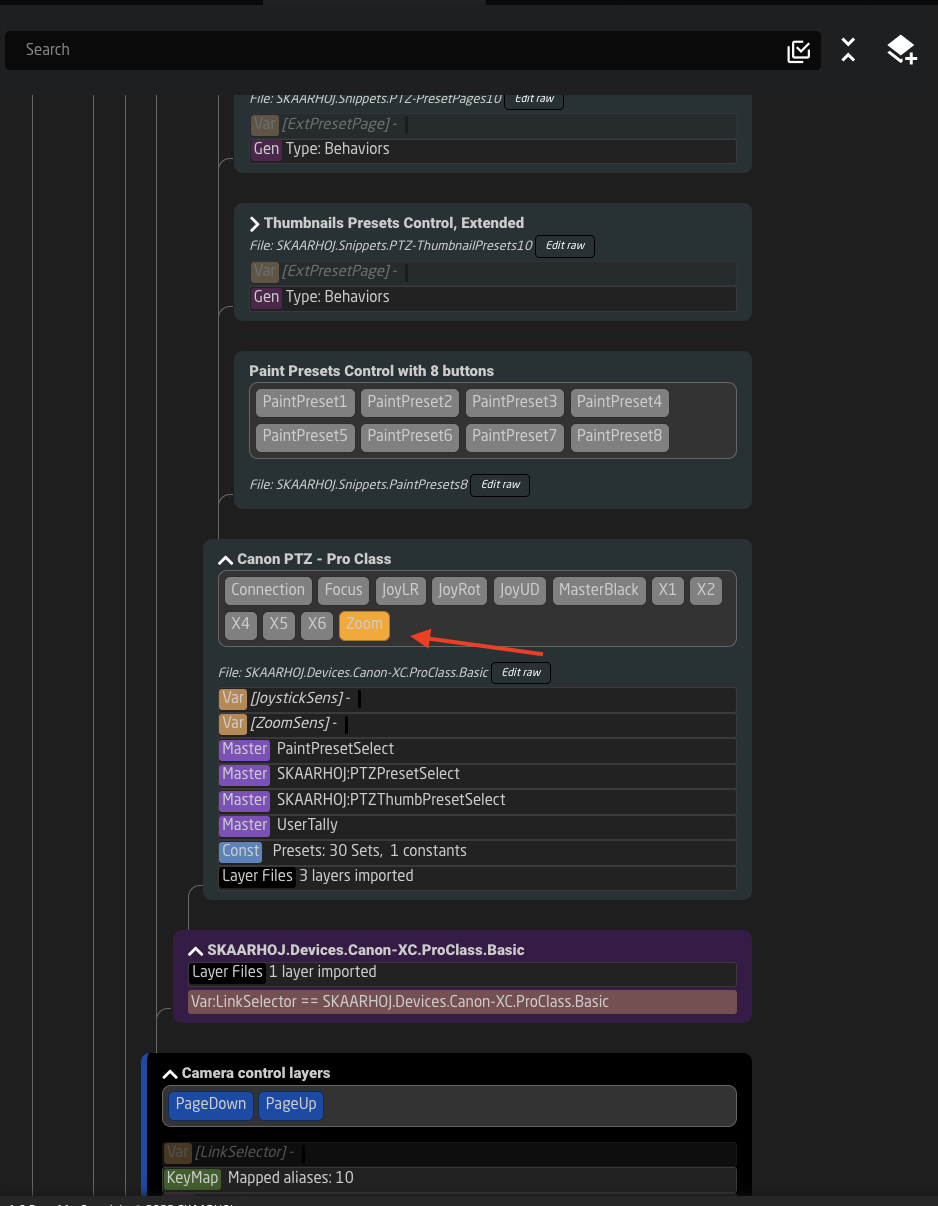
21. The variable and command have now both been set up. The last step is to assign control of the variable to an encoder.
22. Go back to the tree view and navigate deeper in that device core configuration to the Camera Adjustment layer and open it. This will open the tree to see the different page layers of settings for the camera. They should be named based on the what they contain. 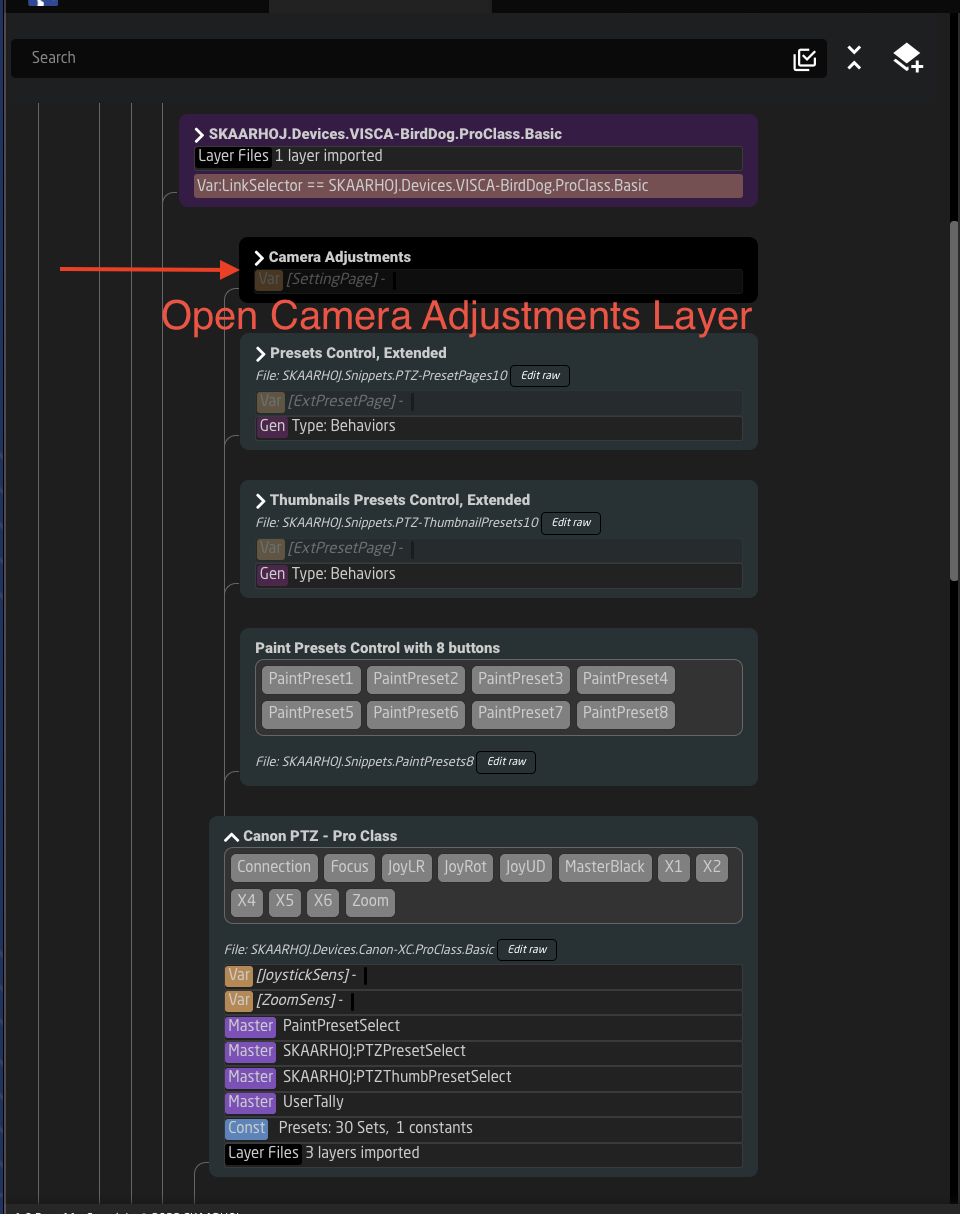
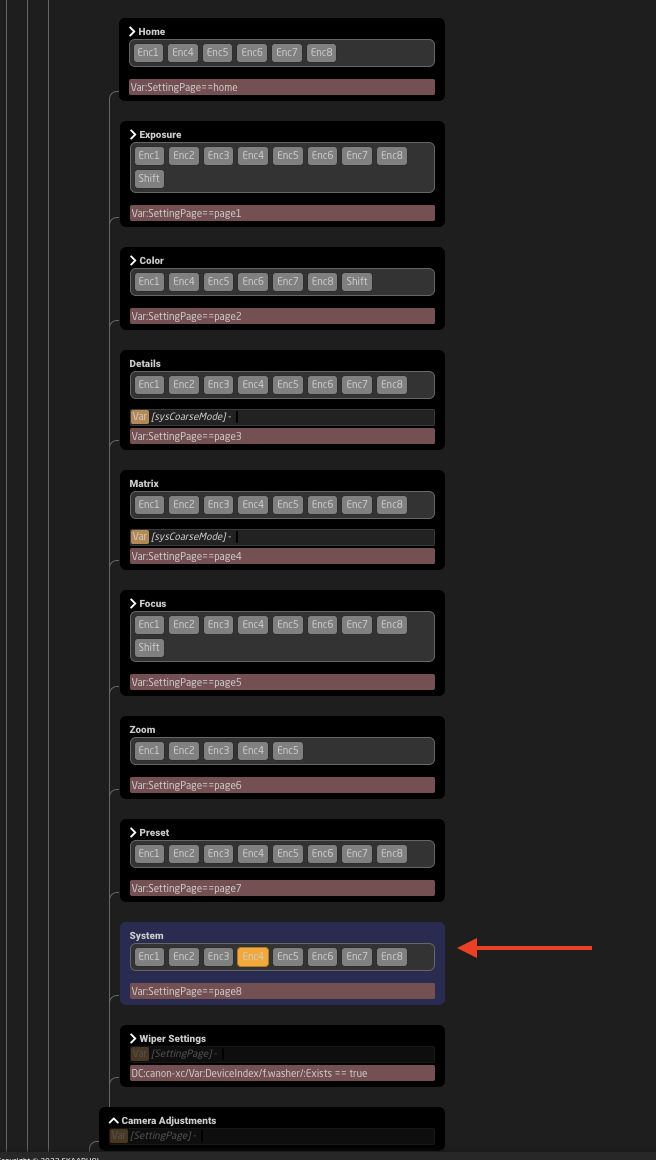
24. Find one of the encoders that does not currently have something assigned to it, you can see this by going to that page on your physical panel and seeing where a good place to put the Zoom Sensitivity Control would be. In this example I am using Encoder 4 (from right to left on the physical panel).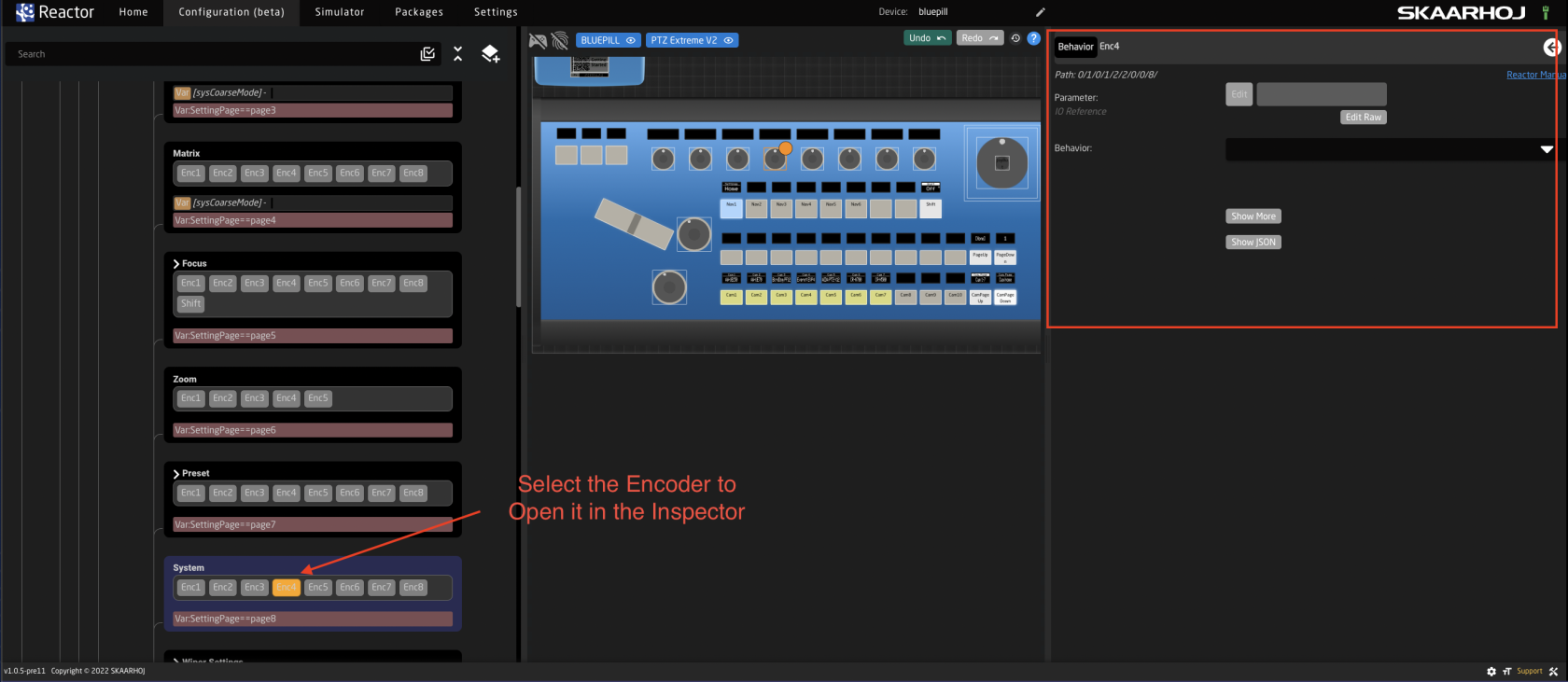
25. In the Inspector select Edit next to the Parameter.
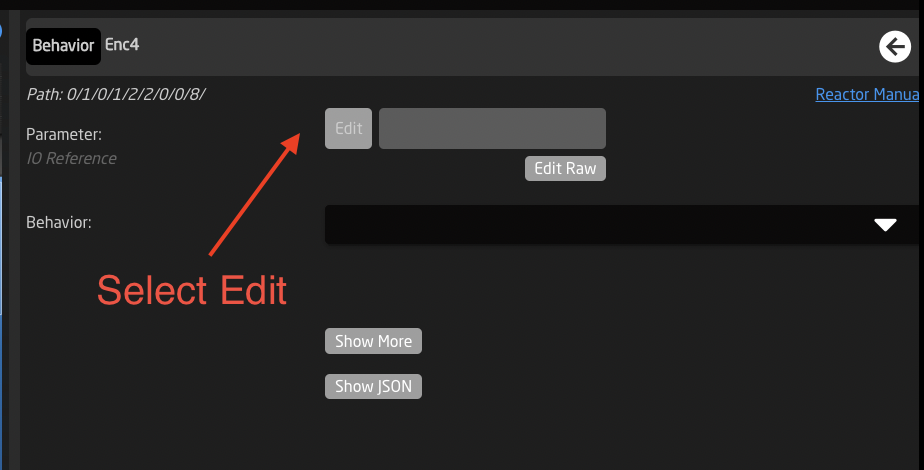
26. In the pop up window, select Variable.

27. In the drop down next to Variable Name, select ZoomSens and press Submit.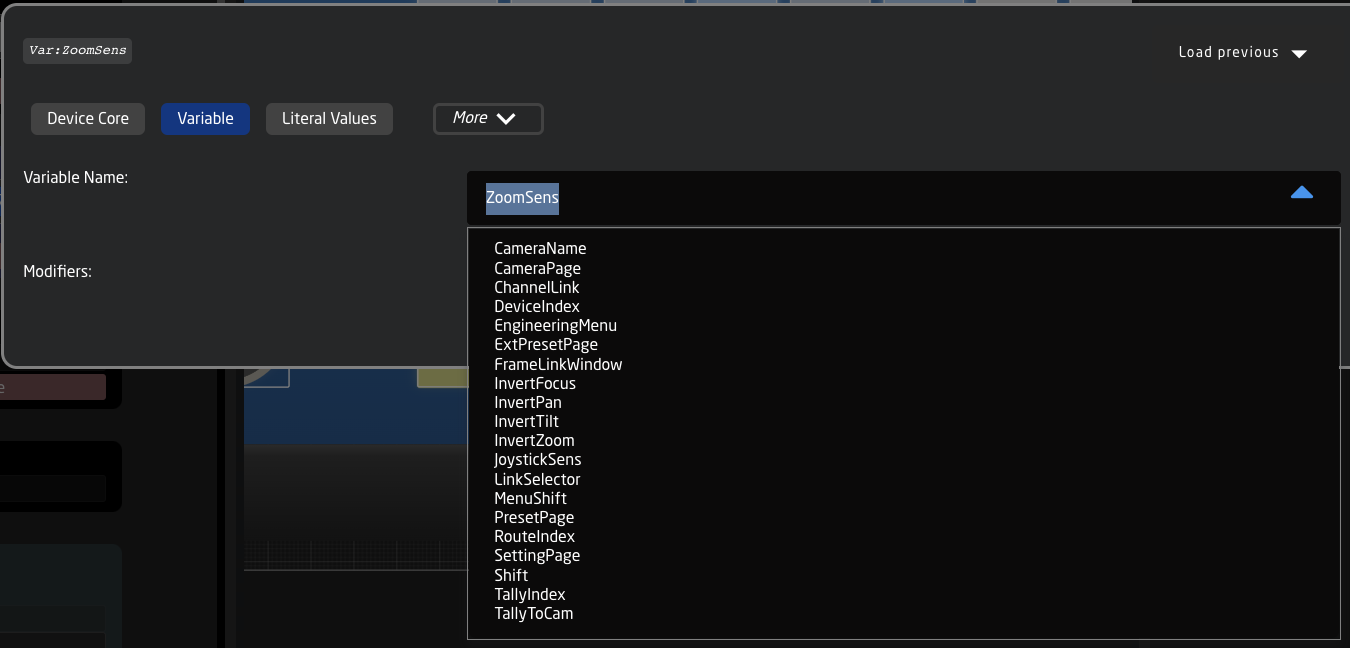
28. After submitting the Behavior should either suggest or auto-assign Step Change. This is the correct behavior.
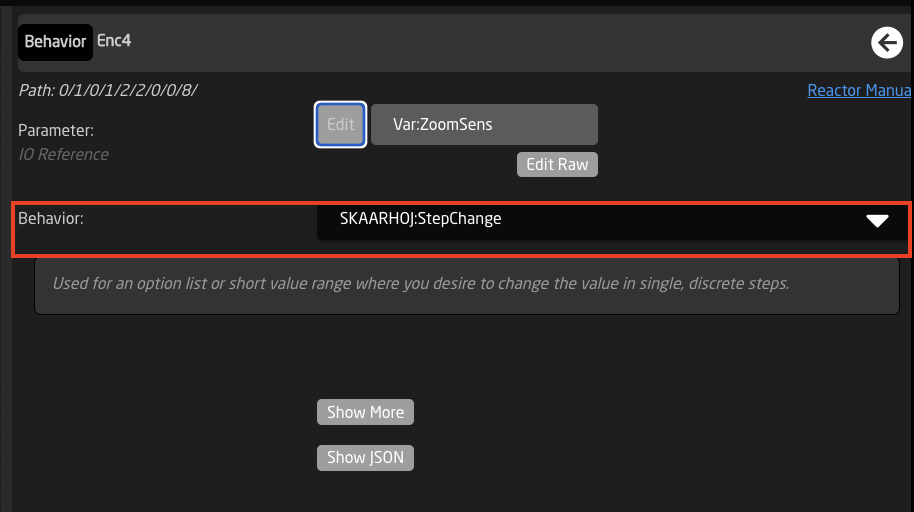
29. You should now be able to control Zoom Sensitivity separately from Pan and Tilt.

30. If you are combining cameras that use multiple device cores on your panel, you will need to go in and do the same in each device core configuration. In the example below there are 3 different configurations and we made the changes to the Canon configuration.

